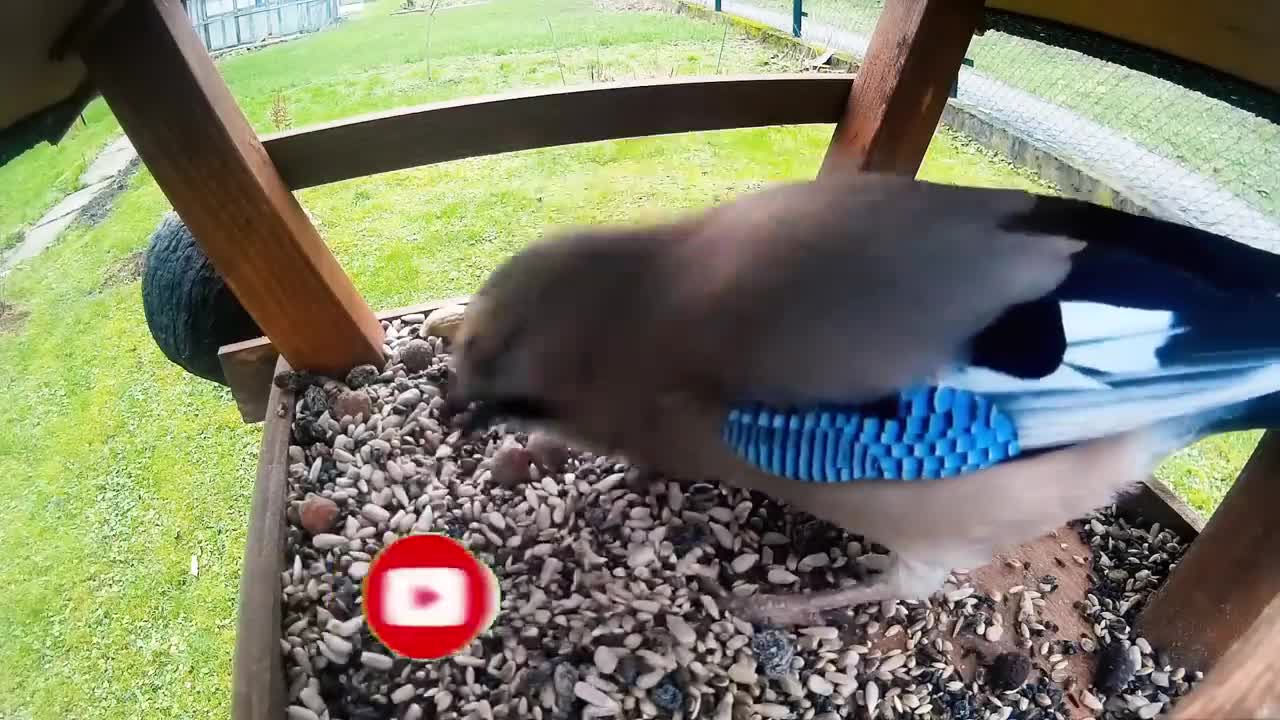Premium Only Content

Things you need to know about JAYS
The most colourful member of the crow family, Jays are becoming a more common sight in parks and gardens. With their bright blue wing patches, orange colour and lively personalities, they are just like their corvid cousins and extremely intelligent and cunning. In this video you will find out lots of facts about them including what they eat, where they nest, what their eggs look like, what noise jays make and much more.
Here is the script I wrote and used:
Jays are arguably our most colourful and exotic looking member of the crow family. They're found across most of the UK except northern Scotland but also Europe, north west Africa, and across central Asia as far east as Japan. There are 33 recognised subspecies, each with their slightly different marking although all of them are orangey brown over most of their bodies and have a striking blue patch on each wing. The variant found in the UK also has a black and white patch at the end of each wing, a black and white tail, a black moustache and beak a white rump and a lighter faintly striped crown. They have a wingspan of 52 to 58 cm and grow to around 160 grams in weight. That’s 21 to 22 inches and five and a half ounces if you prefer.
Traditionally Jays were found in mature deciduous woodlands but they are gradually becoming more common visitors of parks and gardens. Just like other members of the crow family Jays are opportunistic omnivores, feeding on everything from acorns, seeds, nuts and fruits to insects, small mammals, eggs, young birds and they’ll even eat hibernating bats. During the autumn they sometimes cache food for in case supplies get low in the winter.
Jays usually start breeding from 2 years of age when a pair will form in early spring. They then claim and defend a territory where they build a nest, usually 3 to five metres from the ground in the fork of a tree or sometimes amongst ivy. This is a rough platform of twigs topped with thinner sticks and leaves to form a cup. Once complete the female will lay between 4 and 6 speckled olive eggs that measure just over 3 cm in length. The female alone will incubate them for 16 to 19 days whilst the male stays nearby defending the territory and nest. Once they’ve hatched both parents feed the chicks in the nest until when they are around 3 weeks old. At this point the young look like smaller versions of their parents but with shorter tails and wing feathers and they are ready to fledge. Their parents continue to feed them for a further 3 to 5 weeks whilst they learn to find food and fend for themselves after which, the young birds move away from the nesting territory. Jays will only nest once per year and after a pair is formed they will often stay together for life.
Jays have their own call which sounds like but they are also really good mimics of other birds and man made noises. I once saw one mimicking a jackhammer whilst trying to intimidate a carrion crow and it seems they are smart enough to imitate things that represent danger, like this one mimicking a cat. Over most of the UK they are resident all year round but some birds in Scotland do move south for the winter and sometimes migrants from northern Europe are recorded in England throughout the colder months. Their breeding populations here are fairly stable at around 130,000 pairs and they have an average life expectancy of between 2 and 3 years. Although one wild bird survived to 16 years, 9 months and 19 days of age.
-
 1:19:29
1:19:29
Game On!
13 hours ago $4.01 earned8,000 Subscriber Celebration Stream!
22.2K1 -
 28:30
28:30
Degenerate Jay
15 hours ago $3.99 earnedThe Rejected 007 Quantum Of Solace Ending That Would Have Changed James Bond
33.5K6 -
 11:37
11:37
ARFCOM Reviews
15 hours ago $2.03 earnedNew Budget Comp'd Carry || Canik MC9 PRIME
24K4 -
 8:22
8:22
Rethinking the Dollar
18 hours agoSilver vs CBDCs: The Battle for Financial Freedom
27.9K6 -
 55:15
55:15
MTNTOUGH Fitness Lab
18 hours agoTJ Dillashaw: Embracing Fear as a Privilege | MTNPOD #112
18.8K2 -
 12:24
12:24
T-SPLY
23 hours agoKamala’s COMEBACK FLOPS as Dems DITCH Her!
19.5K13 -
 47:42
47:42
Steph & Kayls
23 hours ago $0.67 earnedReflecting On How Being Spicy Creators Changed Our Relationship, Life And Bank Account | Ep. 2
14.9K5 -
 7:03
7:03
DropItLikeItsScott
1 day ago $1.20 earnedFosTech Drone Predator Pistol Suppressed
22.6K -
 3:31:01
3:31:01
FreshandFit
12 hours agoAfter Hours w/ Dan Cates
129K164 -
 1:37:17
1:37:17
Badlands Media
13 hours agoBaseless Conspiracies Ep. 128: The Accelerationist Cults Grooming Kids into Terrorism with BX
166K52